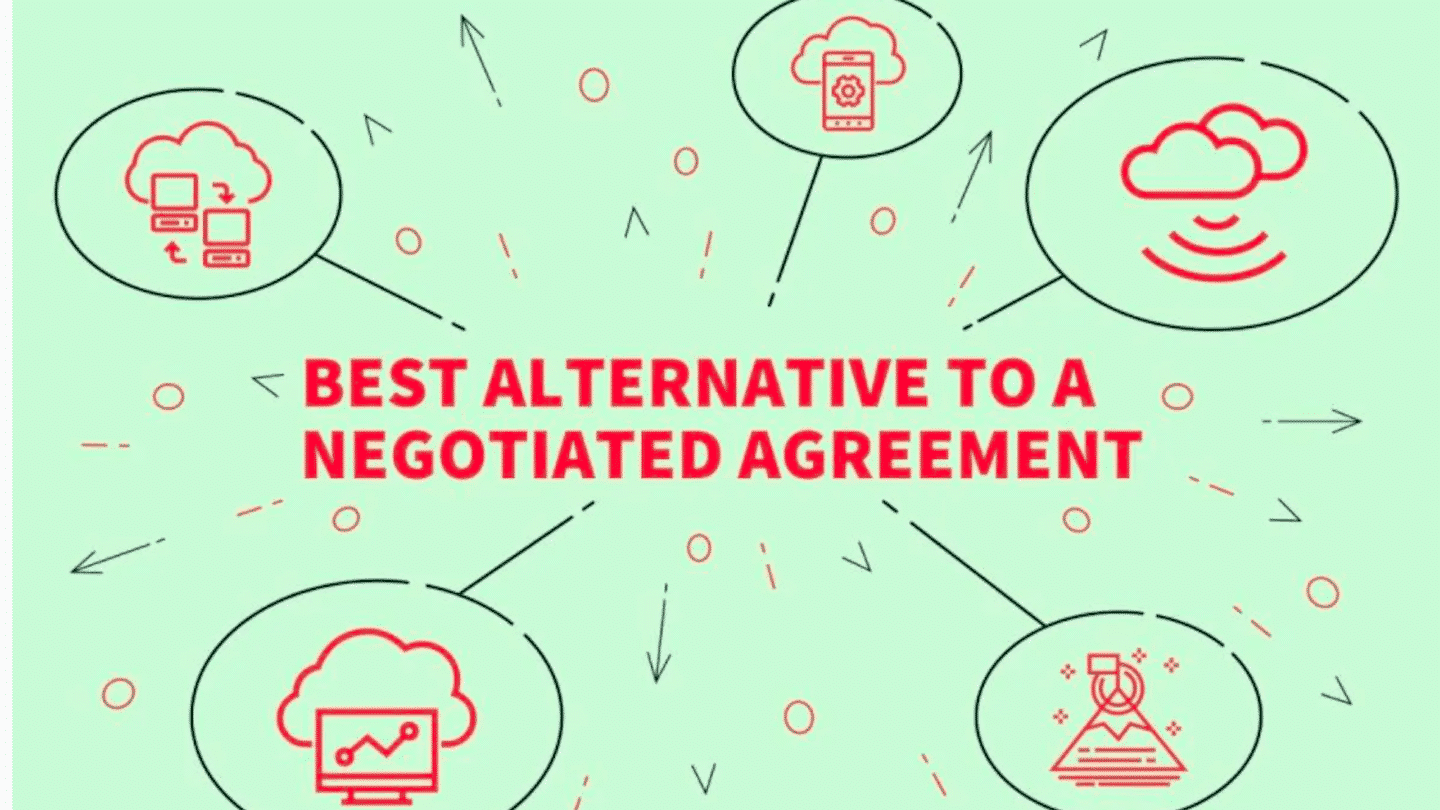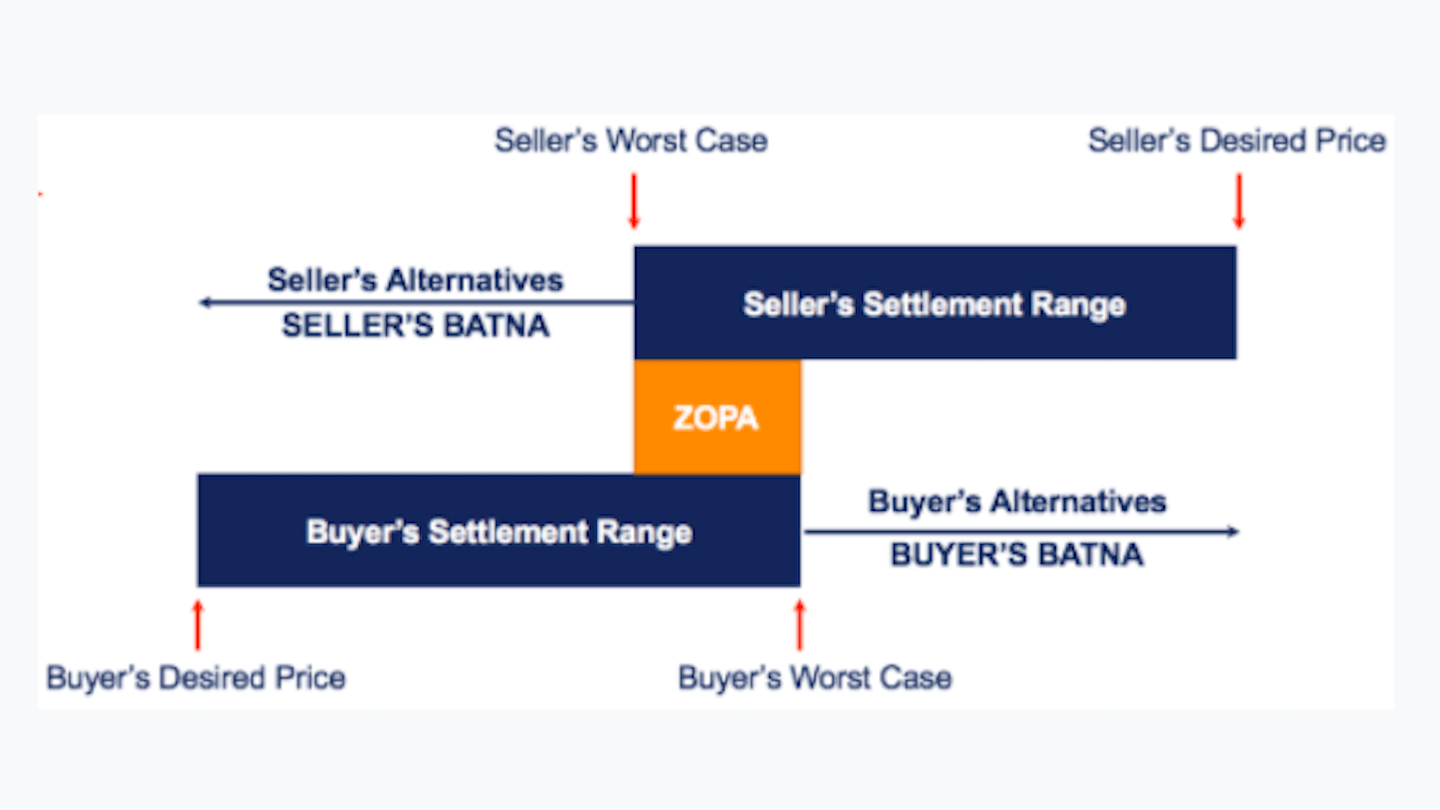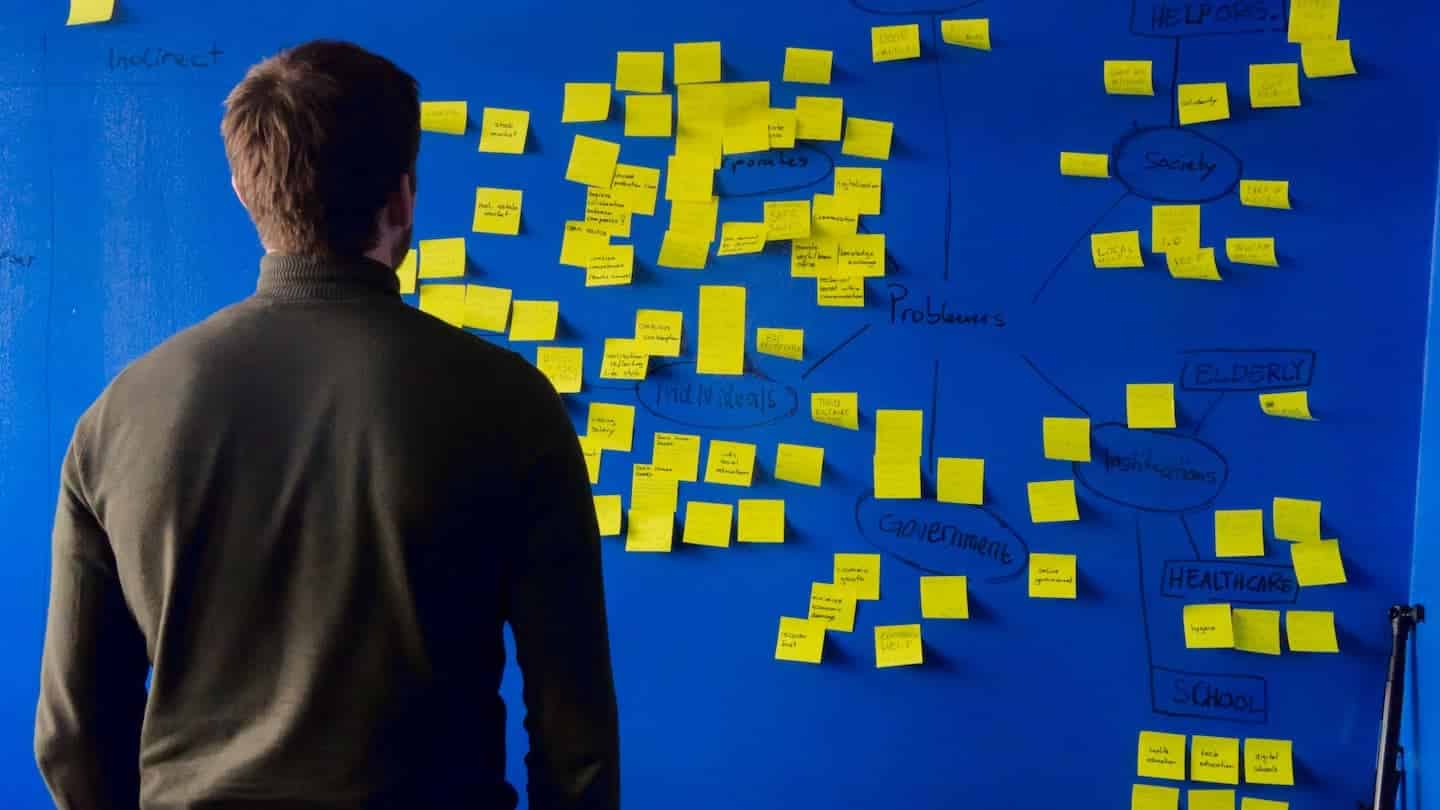BATNA stands for “Best Alternative to a Negotiated Agreement”. In French, it is translated as MESORE: “MEilleure SOlution de REchange/REpli”.
Basically, this is your back-up plan in case negotiations start to go wrong. This is the point at which the agreement is less valuable to you than the lack of an agreement. Having prepared your BATNA can help you to know when to withdraw from the agreement altogether.
But above all, it is a valuable tool for getting the most out of the agreement. It is therefore a key tool to be integrated into your negotiation strategy.
Sommaire
1. A definition of BATNA

Getting to YES is the book in which Roger Fisher and William Ury formalised the BATNA concept. The principle of their research: find the best alternative to a negotiated agreement. In other words, this is the best you can get if the other person refuses to negotiate with you. So it is not necessarily your ideal outcome!
In summary
The BATNA is the best you can do WITHOUT the person you were negotiating with.
The BATNA is essential to the negotiation because, in order to make a wise decision about accepting a negotiated agreement, you need to know the alternatives.
Your BATNA “is the only standard that can protect you both from accepting conditions that are too unfavourable and from rejecting conditions that it would be in your interest to accept”. To put it simply:
- When the proposed agreement is better than your BATNA, you should accept it
- If the agreement is not better than your BATNA, you should reopen negotiations
- And if you can’t improve the deal, you should at least consider withdrawing from the negotiations and pursuing your alternative (although the relational costs of doing so must also be considered)
Having a good BATNA increases your bargaining power. When you know you have a good alternative, you don’t feel obliged to make concessions to get a deal. You can even push the other party further! On the other hand, if your options are slim or non-existent, the other person may insist, and you are more likely to agree… simply because you have no better option.
And if your BATNA is strong, don’t hesitate to reveal it to your opponent! On the other hand, if it is weak, it is better to keep it to yourself.

2. How to determine your BATNA & that of the buyer: a framework
How do you determine your best alternative to a negotiated agreement? BATNAs are not always obvious. Fortunately, there is a process to follow. Fisher and Ury have outlined a simple process to help you determine your BATNA:
- 1. Make a list of actions you could take if no agreement is reached
- 2. Improve some of the most promising ideas and convert them into practical options
- 3. Choose, as an indication, the option that seems best
Then repeat the process from the other side’s perspective. A smart negotiator sees the whole picture!
It is always interesting to determine one’s BATNA, whether the negotiation is about a simple or complex issue. Ury and Fisher use the example of a job search. The question to ask is: what if you do not receive any interesting job offers from company X?
Listing the options is the first step in determining your BATNA. Should you change jobs? Search in another city? Go back to school?
If the offer you are waiting for is in Paris, but you had also considered living in Lyon, try to find a job offer there. Indeed, with a job offer on the table in Lyon, you will be better able to evaluate the offer you will be given in Paris. Finally, you need to choose your best alternative: which of your realistic options would you really want to pursue if you do not get the job offer in Paris?
Among the various factors to consider when thinking about your alternatives, some are essential.
1. The cost
Cost is a key factor in identifying your BATNA. The idea is to determine which option is most affordable. Compare the cost of the agreement being negotiated with the cost of your alternatives. In estimating the cost of each alternative, be sure to take into account both long and short term considerations. Do the exercise for the person you are negotiating with as well.
2. Feasibility
Having lots of options is good, having them feasible and plausible is better. Although you are encouraged to be creative in your brainstorming to find as many alternatives as possible, the feasibility criterion is then essential to identify your BATNA. Then ask yourself which option you can realistically implement in time.
3. The impact
Beyond cost and feasibility, try to estimate the impact of your alternatives. Indeed, it is crucial to define your BATNA to know which option will have the strongest and most immediate positive influence.
4. The consequences
To choose your best alternative, looking at the outcome of each possible solution can help you see more clearly. Sometimes it is better to go for a slightly more expensive solution, but with faster consequences.
5. Stakeholders
Finally, you should also think about the other people involved in each of your alternatives. Ask yourself whether you need buy-in from certain stakeholders in order to carry out your BATNA. Also think about who might be affected and how by each of your options.
3. Psychological biases and EATNA
Guy and Heidi Burgess have slightly adapted the BATNA concept into EATNA: “estimated alternatives to a negotiated agreement” replaces “best alternatives”.
Indeed, negotiating parties tend to overestimate their BATNA, and to see their alternatives as better than they are. It is therefore primarily the perceived alternatives (and their perceived relative values) that matter when deciding whether to accept an agreement.
However, people very often overestimate their BATNA!
4. How to use it?
1. You are not in a zero sum game: be creative

For each item in the framework (cost, feasibility, impact, consequences and stakeholders), ask yourself how you can boost the value of the deal for the other party, and for yourself.
Be creative! For example, on cost, consider different pricing options. You can vary payment terms, payment deadlines, ….
The feasibility of a project in its entirety may seem low, but you can always chop up a project, focus on the must-haves at least at the beginning, and achieve considerable gains quickly and easily.
The impact, the consequences of the agreement, and the stakeholders are not inevitable either.
In any case, understanding your buyer (and what they value) is fundamental.
2. Balance the BATNA to your benefit

Conversely, what can be done with a weak BATNA? Is it possible to turn the situation around? The answer is yes, and there are two ways to do this. The first way is to strengthen your own BATNA. The second way is to weaken the other team’s BATNA, or at least affect their perception of their BATNA.
Ask yourself: what other options could you use to improve your negotiating position? Brainstorm the situation, taking into account all the actors in your organisation. Your planning should also include the priorities, interests and options of the other negotiator.
To improve your BATNA, strive toexpand your options. You might consider bringing more sellers or buyers into the equation. A new negotiator’s interests may coincide with your own or the other negotiating team’s. Creative financing, for example, may present a more attractive option for a new negotiator. Creative financing may, for example, present a more attractive option for the other negotiator. If you weaken the other party’s best alternative by adding a new term to your offer, the game takes a completely different turn.
One last thing
In this article, the BATNA “alternatives” have generally been treated as concrete alternatives (another job, another client, …), but you should never forget the most obvious, and simplest, alternative: do nothing. And this applies to every step of your negotiation.
You don’t have to speed things up by taking action, it may even be in your interest to let things drag on, to give yourself time to consolidate your BATNA.
For example, your business opportunities at any given time may be changing rapidly. Rather than offering aggressive discounts to close a thin pipeline, it may be better to consolidate your pipeline with new opportunities, and leave open opportunities for a few days.





